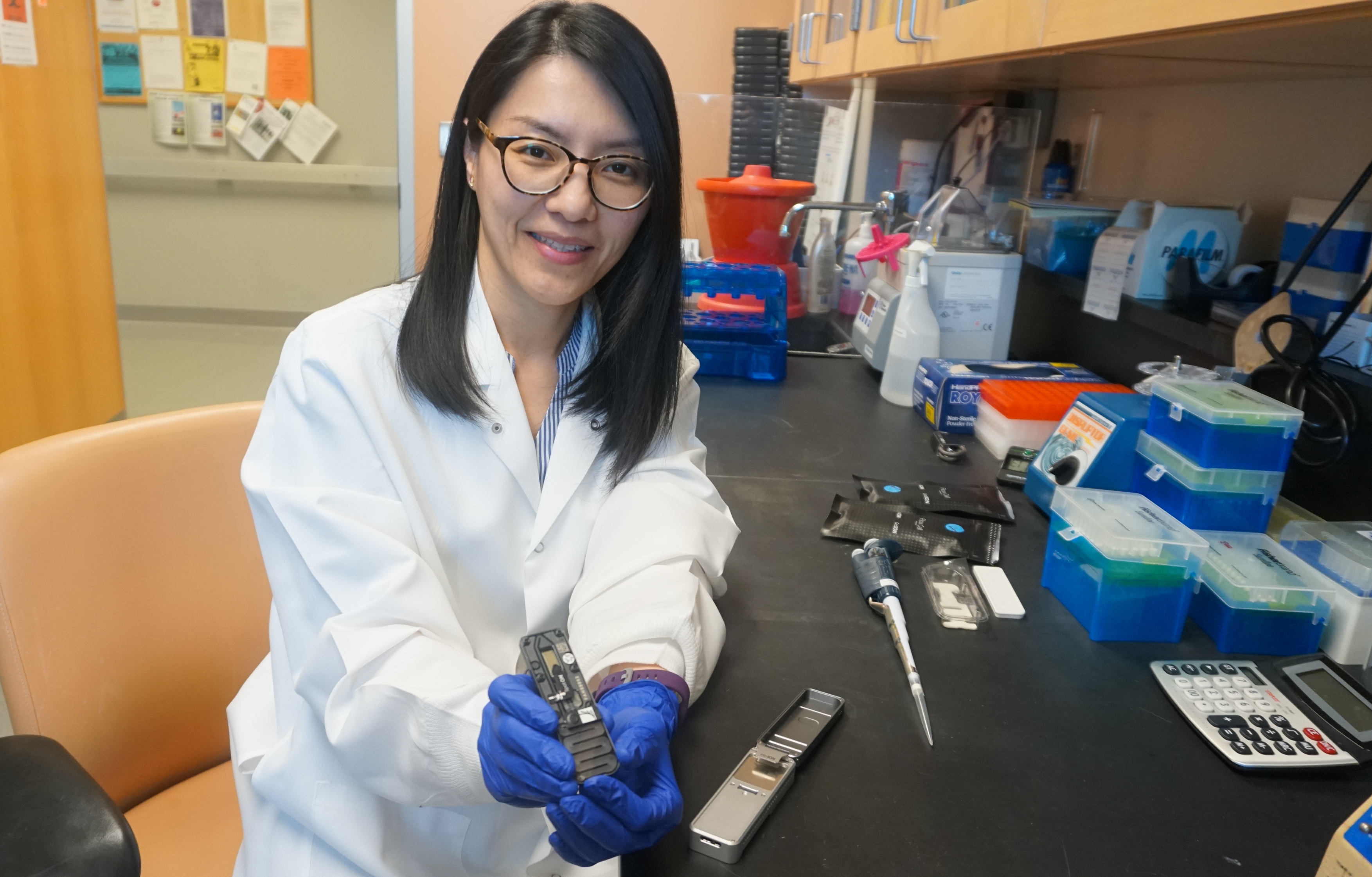UAMS Researchers Lead First Rapid Sequencing of Multiple Viruses Using Pocket-Sized Device
| An international team of researchers led by the University of Arkansas for Medical Sciences (UAMS) is the first to deploy a pocket-sized nanopore device for rapid genetic sequencing of multiple human viruses.
The findings are published in the journal Frontiers in Microbiology, the world’s most cited microbiology journal.
UAMS’ Thidathip (Tip) Wongsurawat, Ph.D., and Piroon Jenjaroenpun, Ph.D., developed the technique, setting the stage for rapid, mobile virus tracking in rural regions across the globe. They were joined by collaborators from UAMS, including David W. Ussery, Ph.D., a professor in the Department of Biomedical Informatics, College of Medicine, and Intawat Nookaew, Ph.D., associate professor in the department.
“Using the new hand-held device, in just two hours we had complete genomes of six viruses,” Wongsurawat said. “This is an exciting development that could have life-saving potential as we combat future infectious disease epidemics around the globe.”
The research project’s external collaborators are from the University of Tennessee Health Science Center in Memphis; University of Sao Paulo Ribeirao Preto, Brazil; Mahidol University, Bangkok, Thailand; and University of Louisville, Kentucky.
The team’s findings were made possible by recent advances in gene sequencing technology. The team used an Oxford Nanopore Technologies device called MinION, the only portable real-time device available for DNA and RNA sequencing.
Wongsurawat, a postdoctoral fellow who joined UAMS in 2017, said the results show the hand-held device can be used in real-world settings where human biosamples may contain multiple viruses. The team demonstrated the sequencing from a sample containing six viruses: Mayaro virus, Venezuelan equine encephalitis virus, Chikungunya virus, Zika virus, vesicular stomatitis Indiana virus, and Oropouche virus.
Wongsurawat said the team overcame challenges of rapid diagnoses of infectious disease epidemics, which are primarily driven by RNA viruses. Sequencing of RNA viruses previously required a number of steps (for reverse transcription of RNA to cDNA) that significantly slowed the process.
“Using our method, we were able to skip these steps and provide real-time sequencing, which makes rapid detection and characterization of emerging pathogens possible,” Wongsurawat said.
The team’s work was supported by the Helen Adams & Arkansas Research Alliance Endowed Chair, the National Institute of General Medical Sciences of the National Institutes of Health (NIH) award P20GM125503 and NIH award R01AI103053.
UAMS is the state’s only health sciences university, with colleges of Medicine, Nursing, Pharmacy, Health Professions and Public Health; a graduate school; hospital; a main campus in Little Rock; a Northwest Arkansas regional campus in Fayetteville; a statewide network of regional campuses; and seven institutes: the Winthrop P. Rockefeller Cancer Institute, Jackson T. Stephens Spine & Neurosciences Institute, Harvey & Bernice Jones Eye Institute, Psychiatric Research Institute, Donald W. Reynolds Institute on Aging, Translational Research Institute and Institute for Digital Health & Innovation. It is the only adult Level 1 trauma center in the state. UAMS has 2,727 students, 870 medical residents and five dental residents. It is the state’s largest public employer with more than 10,000 employees, including 1,200 physicians who provide care to patients at UAMS, its regional campuses, Arkansas Children’s Hospital, the VA Medical Center and Baptist Health. Visit www.uams.edu or www.uamshealth.com. Find us on Facebook, Twitter, YouTube or Instagram.
